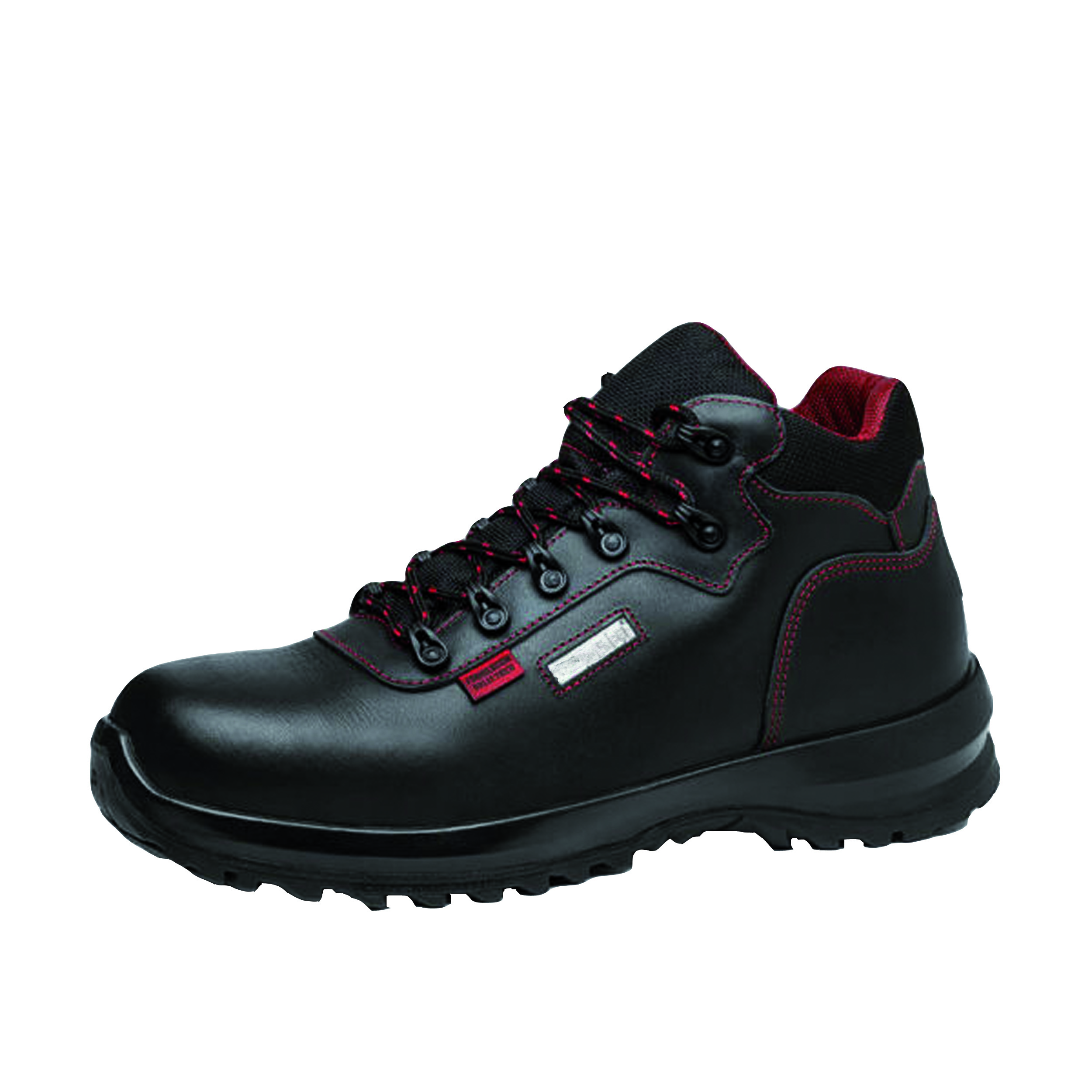
Working on power lines can be dangerous for installers. They can be electrified or electrocuted, in addition of the risks already present on a building site (fall, burns etc.).
Employers are responsible for providing their teams with suitable equipment that complies with safety standards. Fitter needs to use the equipment provided to protect himself.
What PPE is essential to protect yourself on a construction site, and more specifically to prevent electrical hazards?

Standard PPE
To guarantee the safety of workers on a construction site, a number of PPE items are essential. These protect sensitive parts of the body.
Head protection
First of all, it’s vital to protect the head. Construction helmets are often mandatory. These will protect the head against impacts and falling objects, for example. Helmets must comply with the EN 397 standard.
There are also helmets specially designed to protect fitters from electrical hazards. These are regulated by standard EN 50365.
When working at height, installers should fit their helmets with chinstraps to prevent them from getting lost during work.
Eyes protection
It’s crucial to protect the eyes during work. Fitters may be exposed to projections, particularly of particles, which could damage their vision.
Depending on the application, the surface area to be covered will vary: goggles will only protect the eyes, while a face shield will cover from the forehead to the chin.
This PPE must comply with standard EN 166. This describes the information that must appear on the goggles or shield to enable users to know the optical class and mechanical resistance levels of the lenses and temples. There is a large choice of protective eyewear and shields, depending on the area of use (projection of liquids, particles, gases, etc.), optical class (from 1 to 3), level of impact resistance, resistance to fogging, etc. The goggles that protect against electric arcs are marked with an 8 on the temples.


Hands and feet protection
Hands and feet are often the most accident-prone parts of the body. That’s why it’s important to protect them as much as possible.
There are several types of gloves, depending on the work to be carried out. Gloves for protection against chemical hazards must comply with EN ISO 374-1. These are generally made of nitrile or latex.
Gloves protecting against mechanical hazards must comply with EN 388. They can be made of fabric, polyurethane or leather.
Safety footwear must be worn when working on construction sites. Their main purpose is to protect the feet from mechanical hazards (impact, crushing, puncture, cuts, etc.), and they must comply with standard EN 20345. There are a multitude of other options, such as chemical resistance, insulation from heat or cold, waterproofing, resistance to electrical currents, etc.).



Other protections
Depending on the type of site the worker is working on, it may be necessary to invest in additional equipment for optimum protection.
- Earmuffs: earmuffs must comply with EN 351 to ensure maximum hearing safety.
- Fall protection: when working at height, workers must wear a safety harness to ensure that they are securely fastened in the event of a fall. These must comply with standards EN 813, EN 358 and EN 361 to be considered a complete fall arrest harness. Ropes and lanyards used on construction sites are also governed by standard EN 12841:2006.
- Masks: employers are obliged to provide their workers with respiratory protection if the site requires it. These PPEs are generally single-use particle-filtering half-masks such as FFP2s. They must comply with standard EN 149. There are a multitude of masks available, with varying degrees of filtration, ventilation, reusability, etc., and they are regulated by different standards.
PPE to prevent electrical hazard
In addition to conventional personal protective equipment, it’s important for a fitter working on a power line to use insulated equipment, which is therefore suitable for this type of work.
Specific clothing
There are garments that protect against the thermal hazards of an electric arc. It is best to ensure that this type of textile complies with standard IEC 61482. This PPE can prevent an accident, but it’s still important to move away from the danger quickly and to undress to avoid any risk of burns.
Insulated gloves
Fitters use insulated gloves when working with live parts. These protect the wearer in the event of physical contact with a live object. They must comply with standard EN 60903.
Gloves are available in 5 classes. These classes are divided by voltage range. The choice of glove class depends on the voltages present in the vicinity of the work site.
- Class 00 :
- AC voltage: 500V
- DC voltage: 750V
- Class 0 :
- AC voltage: 1 000V
- DC voltage: 1 500V
- Class 1 :
- AC voltage: 7 500V
- DC voltage: 11 250V
- Class 2:
- AC voltage: 17 000V
- DC voltage: 25 500V
- Class 3 :
- AC voltage:: 26 500V
- DC voltage: 39 750V
- Class 4 :
- AC voltage: 36 000V
- DC voltage: 54 000V
Insulating gloves are made from synthetic materials. These materials are sensitive to mechanical stress. That’s why we recommend pairing them with over-gloves that provide, among other things, resistance to performance, abrasion, tearing or perforation. They can be slipped on over insulating gloves, providing mechanical safety in addition to the electrical protection provided by insulating gloves. Over-gloves are mainly made of leather.
Dielectric protection footwear
Fitters can wear shoes with dielectric protection to maximize their safety.
This PPE is designed to protect against electrical shocks. While providing mechanical protection, the materials (such as the non-metallic tip) are suitable for work involving electrical hazards.
This type of PPE must comply with standard EN ISO 20345.
Footwear with dielectric protection is not mandatory, but is a secondary protection element.

Tools and insulated equipment
When working on a power line, it’s essential to have the right tools for the job. In fact, the use of insulated tools and dielectric equipment considerably reduces electrical risk.
Insulated tools
Many site tools are available in insulated versions. The fitter will be able to use, for example, a ratchet wrench, screwdriver and stripping knife whose handles are covered with layers of insulation.
To guarantee the quality of these insulation layers, the tool must comply with IEC 60900.
Dielectric equipment
To work in complete safety, the fitter can also use dielectric equipment.
A ladder, for example, is available in an insulating version, which protects the fitter from contact voltages.
There are also insulating mats to protect the work area and the installer from the same contact voltages.


PPE is therefore of paramount importance when it comes to electrical hazards. However, it is important to remember that they do not ensure the complete safety of the fitter if certain rules are not respected, such as:
- Electrical equipment must be installed under no-load conditions, unless specifically indicated.
- It is important to comply with current regulations.
- Personnel must be trained and competent to work on power lines.



